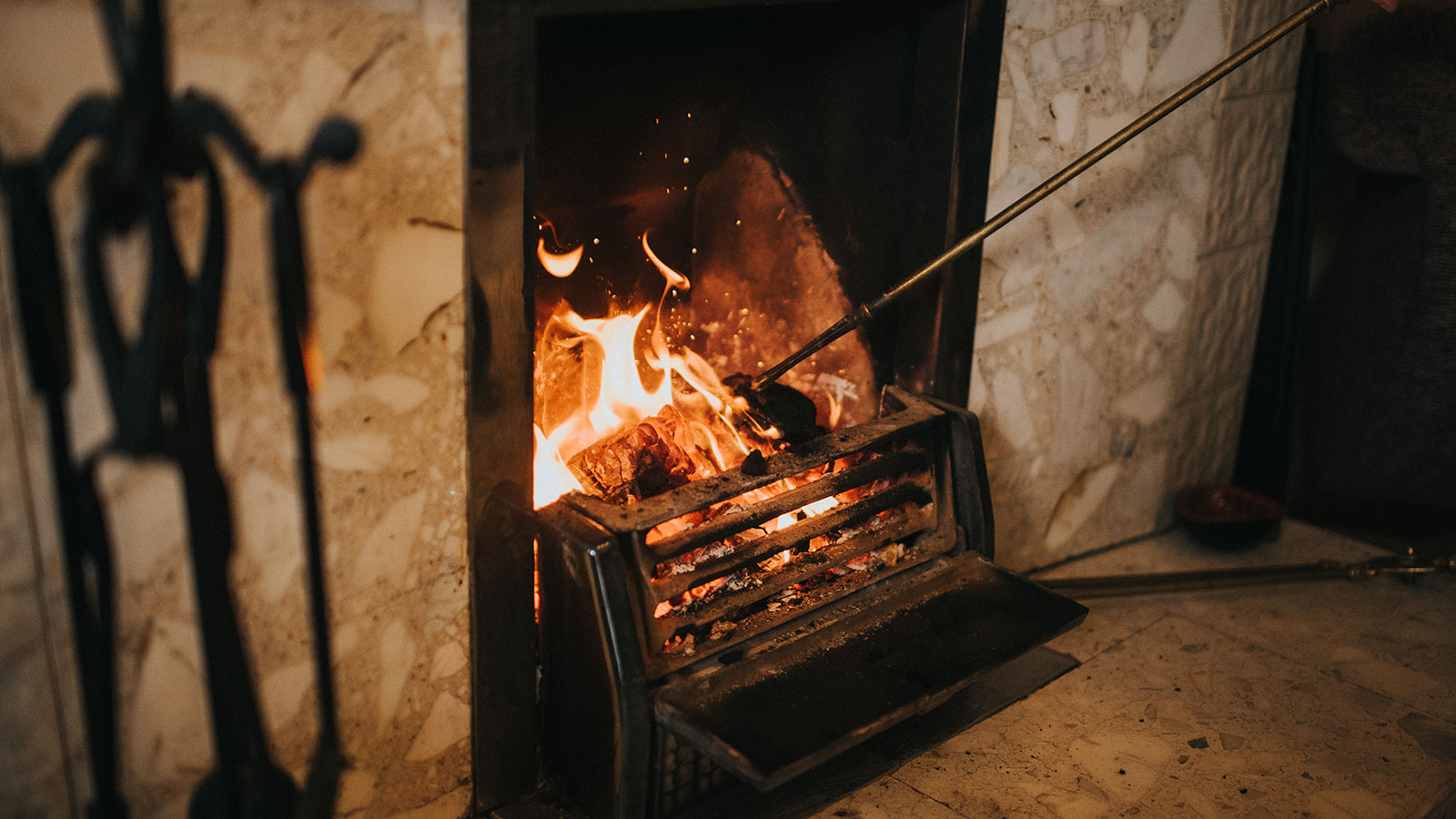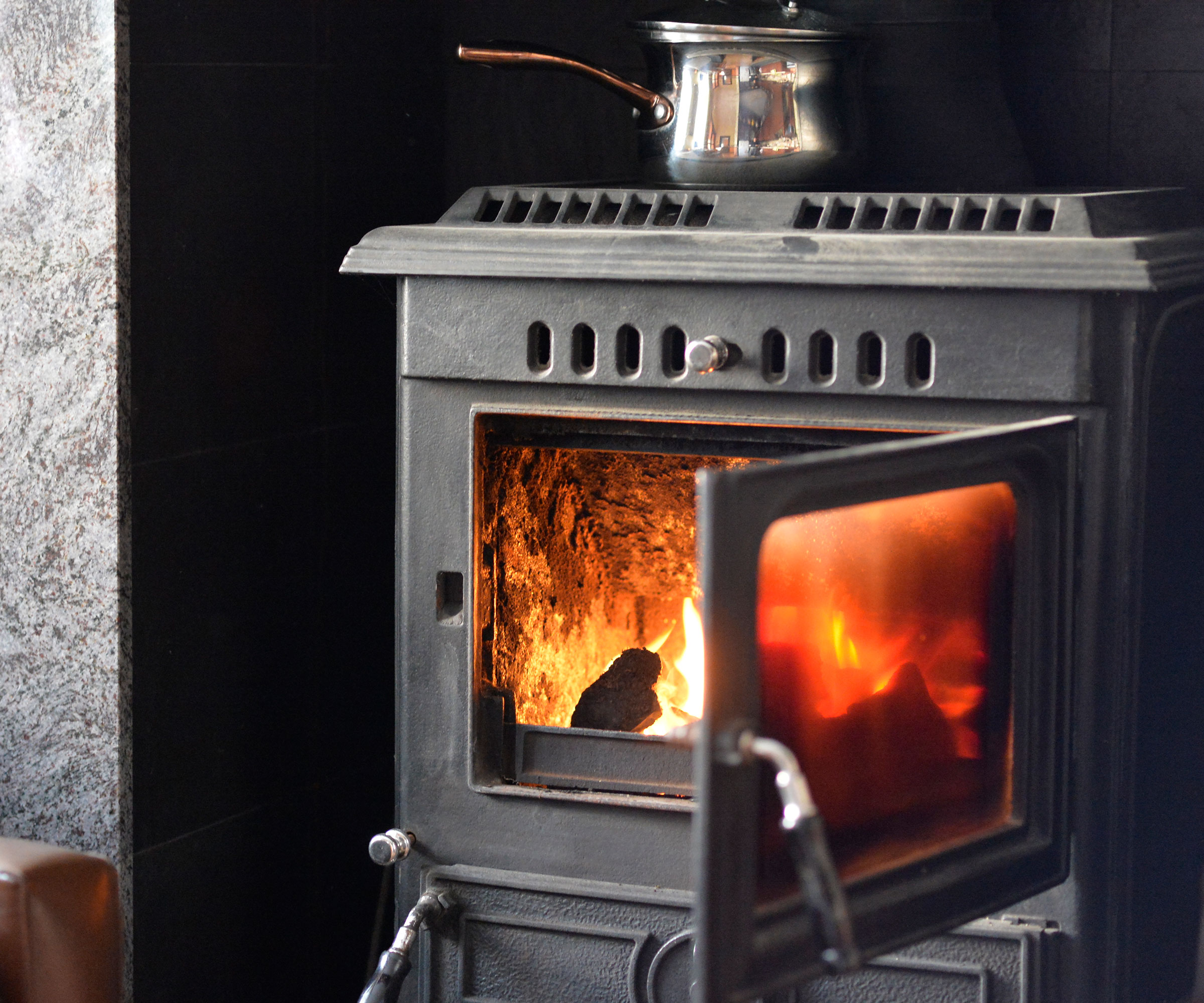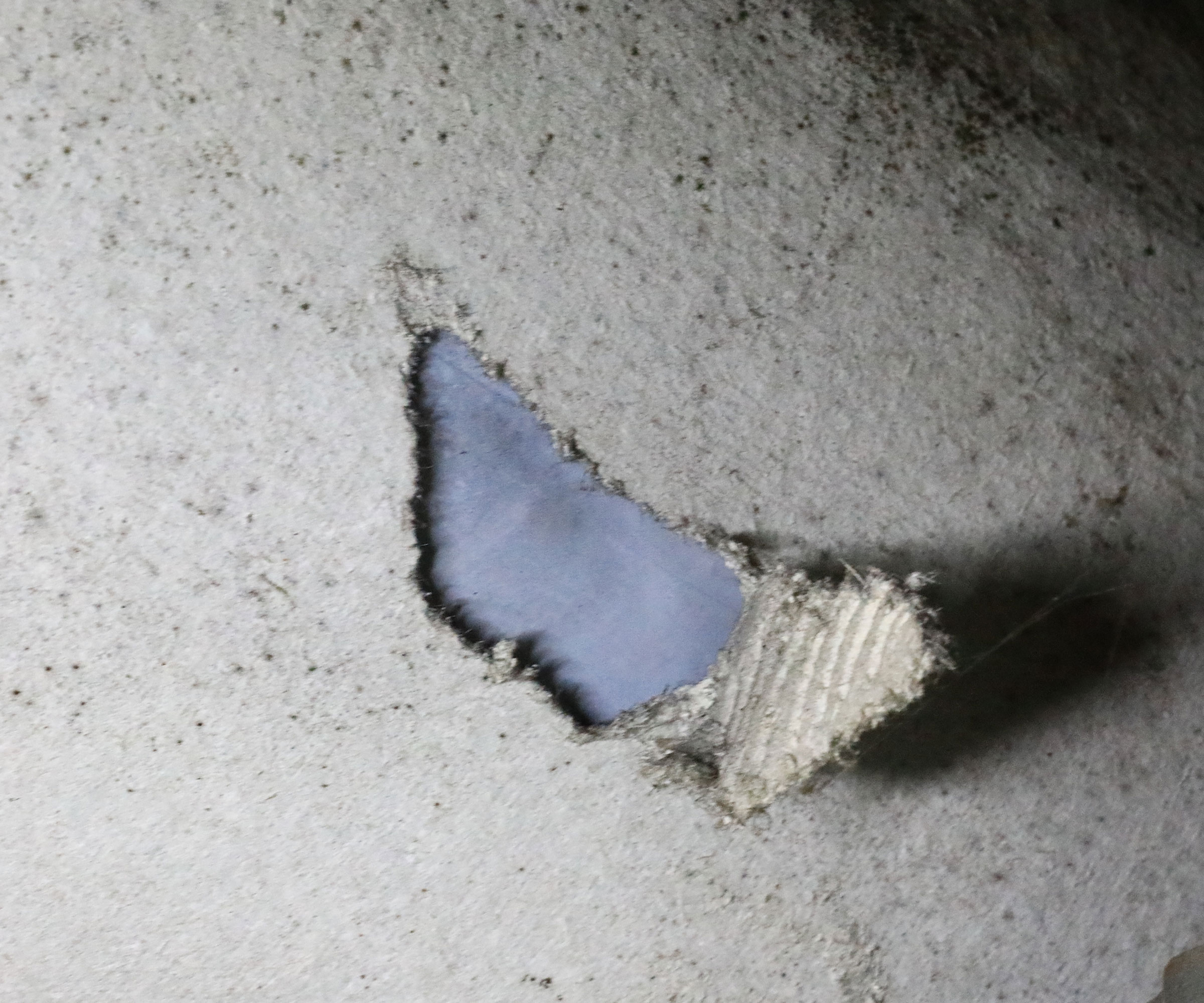Found asbestos in fireplaces in your home? Don't panic – our guide is here to help
Asbestos in fireplaces is actually not as uncommon as you might think. If you suspect it might be lurking in your fireplace, what should you do? We asked the experts

While finding asbestos in fireplaces might not be what you were hoping for when renovating an older property, there is no need to abandon your dream fireplace ideas just yet – there is always a solution.
Asbestos was commonly used in all kinds of areas of the home right up until the late 1980s, so even renovators working on relatively 'new' properties could find themselves faced with this issue.
We reached out to the experts for their advice on where you might find asbestos within a fireplace and what you should do about it.
Why might you find asbestos in a fireplace?
First things first, it is useful to understand the reasons why you might be faced with the presence of asbestos in a fireplace.
"Asbestos, and certain materials containing asbestos, are a good insulator of heat and are resistant to fire," explains Calvin May, head of technical service at HETAS. "This made it an ideal material to use in the construction of certain products which needed to retain heat to function appropriately, like flues within a chimney, or components of a hot water heating system."
While asbestos is no longer used in the construction of fireplaces, anyone living in – and renovating – an older property still needs to be alert to it.
"Technology has since advanced beyond the need for asbestos," continues Calvin May. "However, HETAS installers may, on rare occasions, come across older properties which still contain some asbestos."

Calvin May is head of technical service at HETAS, an independent not-for-profit organisation promoting cleaner and safer choices for the use of biomass and other solid fuels, appliances and associated technologies.
Where are you likely to find asbestos in fireplace?
Whether you are restoring a fireplace, hoping to tear out an old fireplace to replace it with a new model, or have discovered a blocked-up opening that once housed a fireplace, you need to be aware that there could be asbestos lurking in there somewhere.
"To maintain the highest levels of safety, works carried out on a property built or refurbished before 2000 should be assumed to have the potential to contain asbestos," warns Calvin May. "A risk assessment should be carried out by an individual with sufficient knowledge, training and expertise to identify any potential areas containing asbestos before any works commence."
So where are you likely to find asbestos?
"Asbestos is most likely to be found in the lining system of a chimney, or any other nearby components manufactured to retain heat," explains Calvin. "Its presence is significantly more likely in older properties."
Reece Toscani, owner of Redefining Woodburners, points out some other areas to be wary of.
"The presence of asbestos in old fireplace mortar is a possibility, especially if the fireplace was constructed or renovated before the 1980s when asbestos was commonly used in building materials," points out Reece.
"There is a chance, in older properties, that panels of insulation around your fireplace could contain asbestos," continues Reece. "Due to its fire retardant properties it was often mixed into concrete, and plaster, for floors, walls and ceilings. It was also used in and around fireplaces, flue and heating systems, thus there is a chance in older properties that the panels of insulation around your fireplace could still contain it."
There are also some pretty surprising spots in fireplaces that asbestos could be lurking, including within old wood burning stoves, in the stove rope that acts as a seal.
"Sometimes known as the stove gaskets, these were used to seal the stove against air leaks. Asbestos is no longer used in stove rope and it is quite rare to come across it these days," says Reece. " Stoves sold in the UK after 2000 will not have asbestos rope inside them, and the likelihood is that stoves installed prior to this would have had the rope replaced in in the last 20 years with a new fibreglass rope seal. That being said, older stoves that have not seen the light of day for a few decades may require you to proceed with caution."
Homeowners with old gas fires need to be aware that asbestos could be present here too.
"Unlike modern gas fires that use ceramic glass fibres to mould and shape the realistic looking logs, coals and pebbles, some old gas fires may still have original fuel effects that contain asbestos," says Reece Toscani.


Reece is owner of Redefining Woodburners, who offer some of the most luxurious wood burning stoves and gas fires. To help expose more people to these products. they act as agents for these brands and have a network of showrooms around the country.
How do you identify asbestos in a fireplace?
It is not always clear to the untrained eye when you are looking at asbestos and when you are dealing with something far more harmless.
"If you are ever unsure whether your property contains asbestos, it is best to contact a professional, licensed organisation to help," says Calvin May.
While asbestos often has a white, grey or sometimes brown appearance, with a textured surface, it was also often combined with other materials, such as cement, making it hard to identify.
Rather than go digging around looking for it, which could be extremely hazardous, it is always best to assume its presence if you are opening up a fireplace or dealing with one that hasn't been upgraded for some years and call in the pros.

How dangerous is asbestos in a fireplace?
While you shouldn't pack up your belongings and flee if you suspect asbestos in your fireplace, neither should you do nothing.
"Asbestos in a fireplace is extremely dangerous, as disturbing asbestos in any way can release tiny fibres that are detrimental to human health, causing individuals to develop lung disease, lung tissue scarring and other respiratory illnesses," says Calvin May. "The effects may not be instantly noticeable and may even take years to develop, so it is important to take the necessary precautions if asbestos is believed to be present in a fireplace."
How do you remove asbestos from a fireplace?
While you might be keen to get your modern fireplace ideas underway, this is definitely not a time to test out your DIY skills – any kind of asbestos removal needs to be carried out by a qualified professional.
"Should you find any or suspect your home contains asbestos, do not attempt to remove it yourself," confirms Reece Toscani. "Call a professional and do not disturb it."
"You should always ensure asbestos is controlled under an appropriate license," adds Calvin May. "Asbestos used for insulation purposes is considered high-risk and should not be handled if you do not have the necessary license.
"Sometimes removal may not be possible, and the asbestos may require sealing to protect it from further disturbance," adds Calvin.
FAQs
Where else are you likely to find asbestos in a house?
It isn't just fireplaces that asbestos was used within by builders in the past – there are other spots around the home that it was deemed useful for too.
Asbestos roof tiles were a common feature of some inter-war bungalows, while many Artex ceilings could also contain this substance. Pipe lagging, insulation and even some cement flooring are all other areas that could contain asbestos. In short, if you are renovating a house that was built before the 1980s, be aware that there could be asbestos somewhere in your home.
Renovating a house is an exciting project, but it is always worth being aware of potential hazards, including harmful materials, such as asbestos, mould and damp.
Get the Homebuilding & Renovating Newsletter
Bring your dream home to life with expert advice, how to guides and design inspiration. Sign up for our newsletter and get two free tickets to a Homebuilding & Renovating Show near you.
Natasha was Homebuilding & Renovating’s Associate Content Editor and was a member of the Homebuilding team for over two decades. In her role on Homebuilding & Renovating she imparted her knowledge on a wide range of renovation topics, from window condensation to renovating bathrooms, to removing walls and adding an extension. She continues to write for Homebuilding on these topics, and more. An experienced journalist and renovation expert, she also writes for a number of other homes titles, including Homes & Gardens and Ideal Homes. Over the years Natasha has renovated and carried out a side extension to a Victorian terrace. She is currently living in the rural Edwardian cottage she renovated and extended on a largely DIY basis, living on site for the duration of the project.

